Abstract
This article is an overview of social and legal differences in the United States and in Japan that are related to patterns of current drug abuse epidemics in these countries. These two nations have drug abuse problems with different histories and take different approaches currently to handling illicit drug marketing and use. Histories of opiate and cocaine abuse in the United States and of stimulant and inhalant abuse in Japan are discussed. The United States has experienced three heroin epidemics in the last three decades; cocaine addiction began to merit national concern by the end of the 1980s. In Japan, the first methamphetamine epidemic began after World War II; it was controlled in the 1950s. The current inhalant epidemic began in the late 1960s and was followed by the second methamphetamine epidemic that began in 1970; both are continuing to the present. The criminal justice system is always given first consideration when assessing societal measures employed to reduce drug use. Legal penalties for illicit drug offenses reflect the societal differences of these two nations with respect to the seriousness of particular types of crimes. Characteristics of the health care system of a nation may also influence patterns of drug abuse, particularly where functions of criminal justice and health care systems overlap. Health care systems in the United States and in Japan are based on different treatment philosophies and patients' expectations; these differences are discussed along with explanations of their potential influence on the epidemiology of drug abuse.
Full text
PDF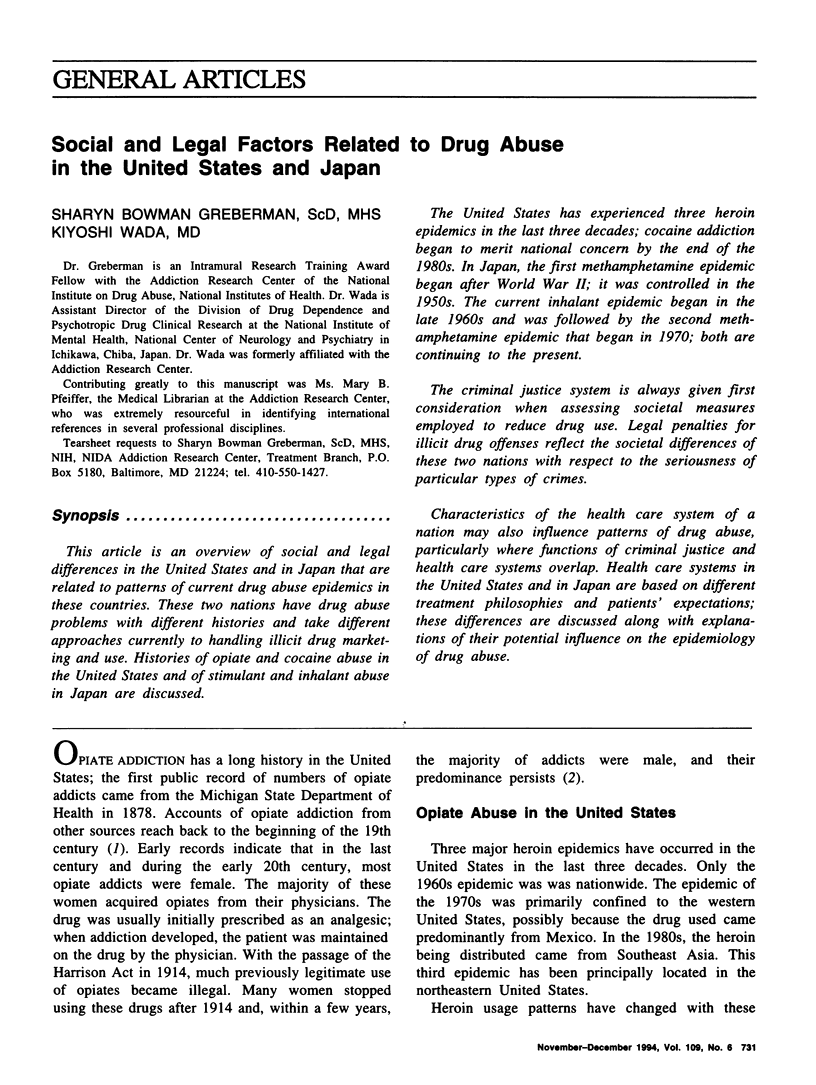
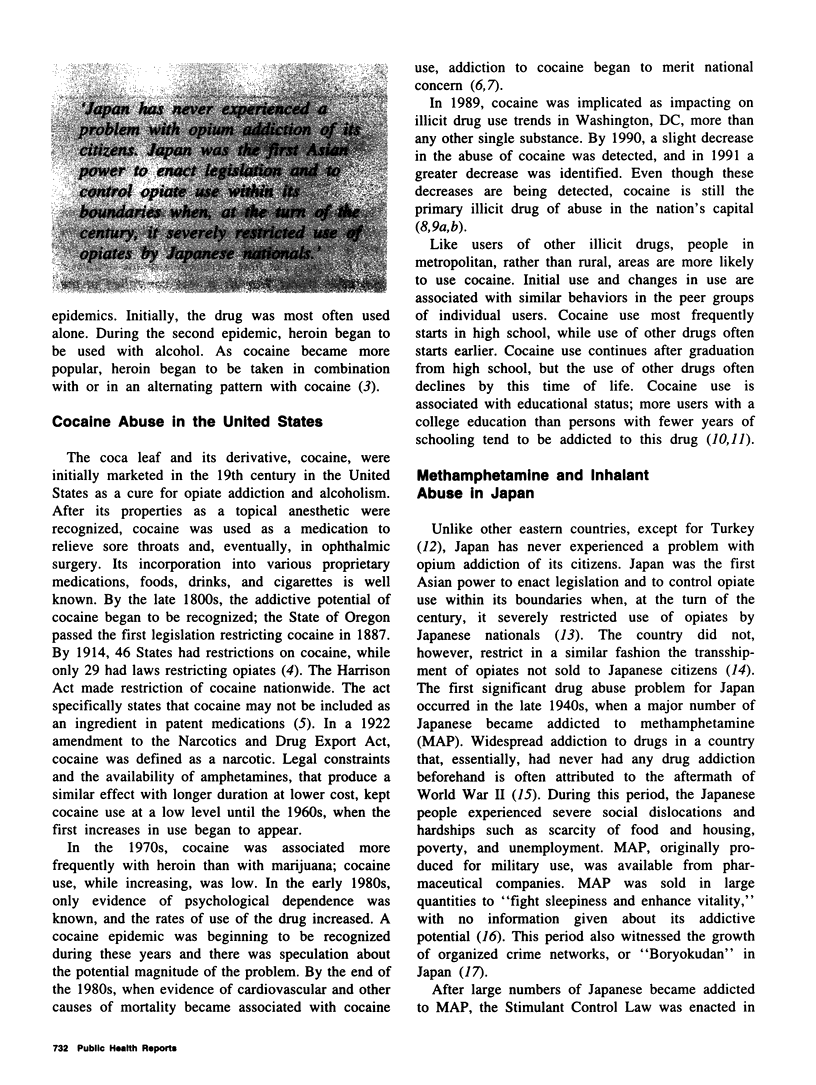
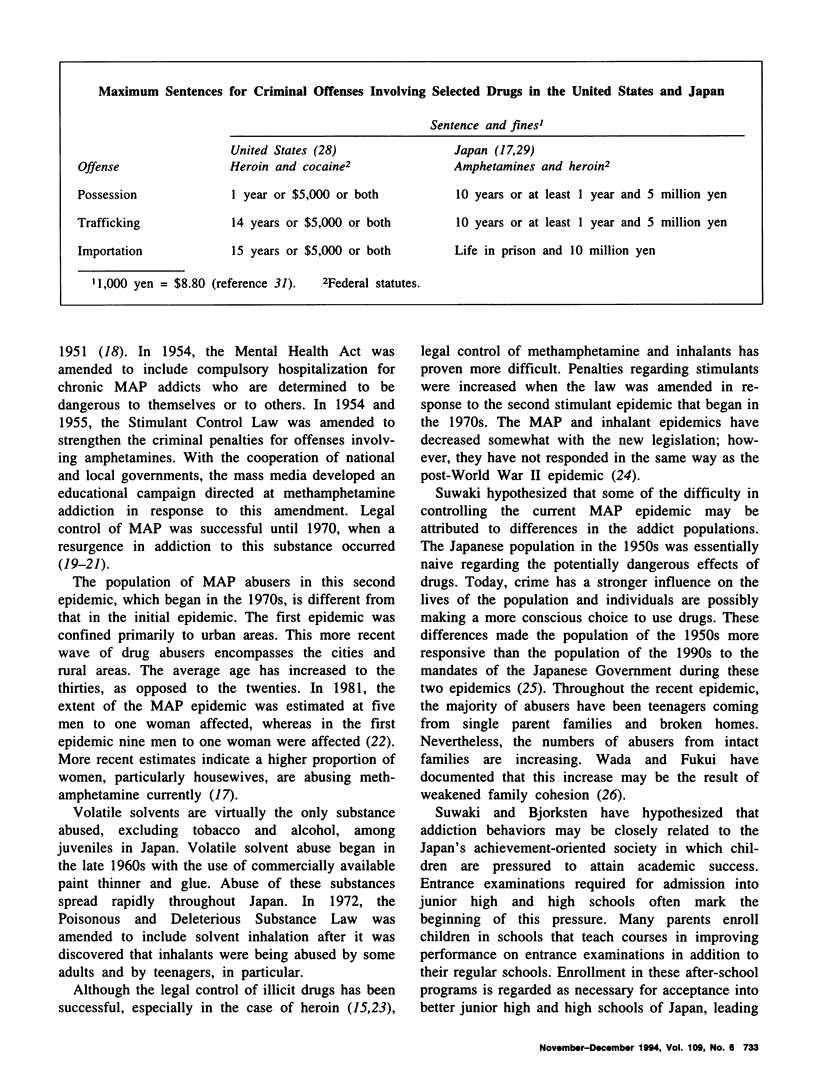
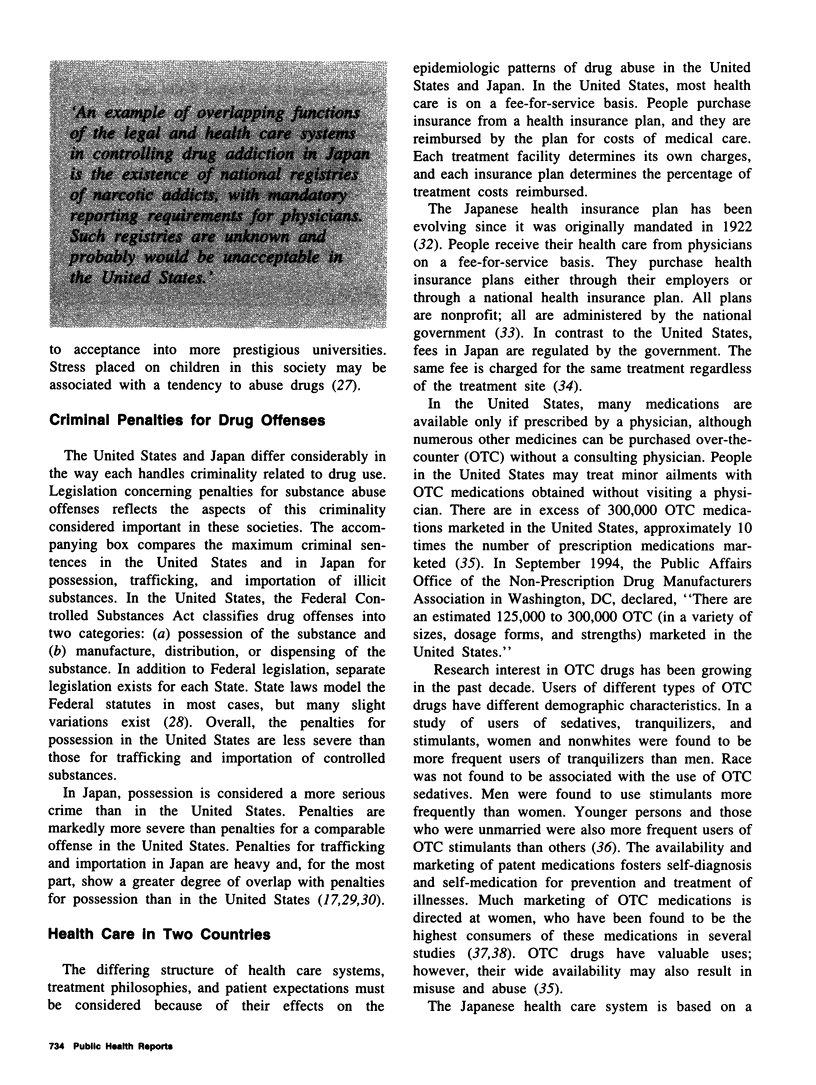
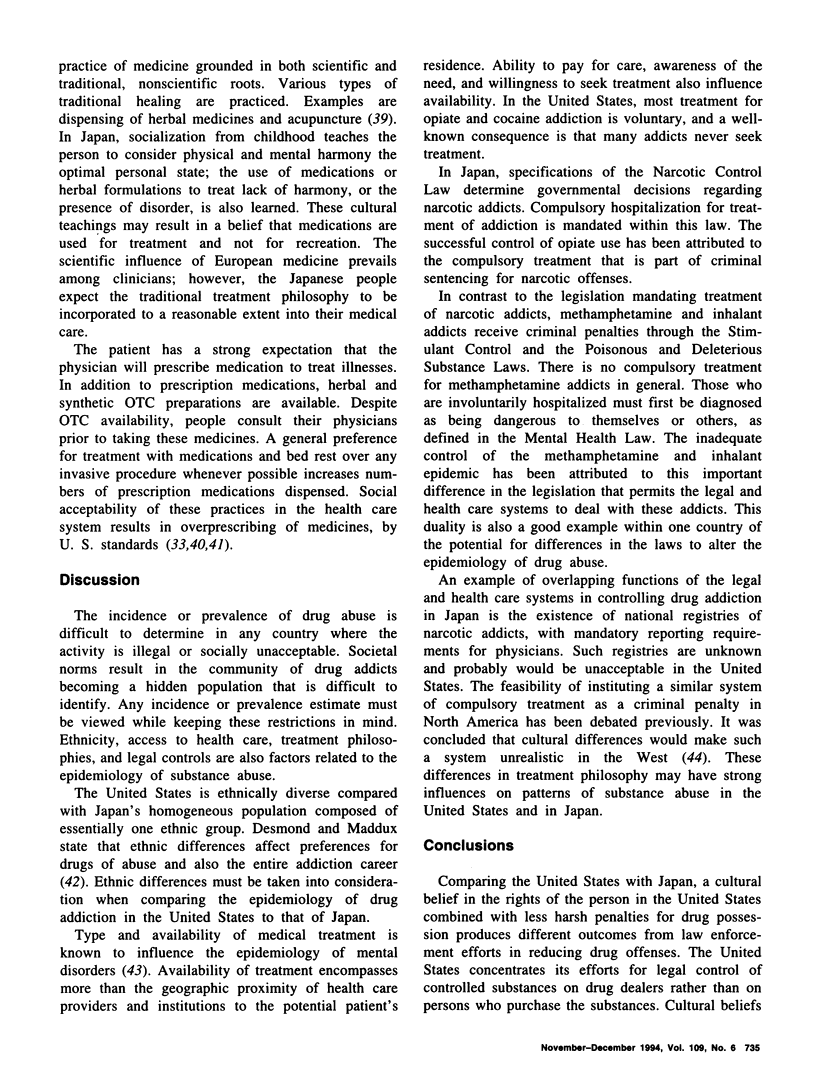
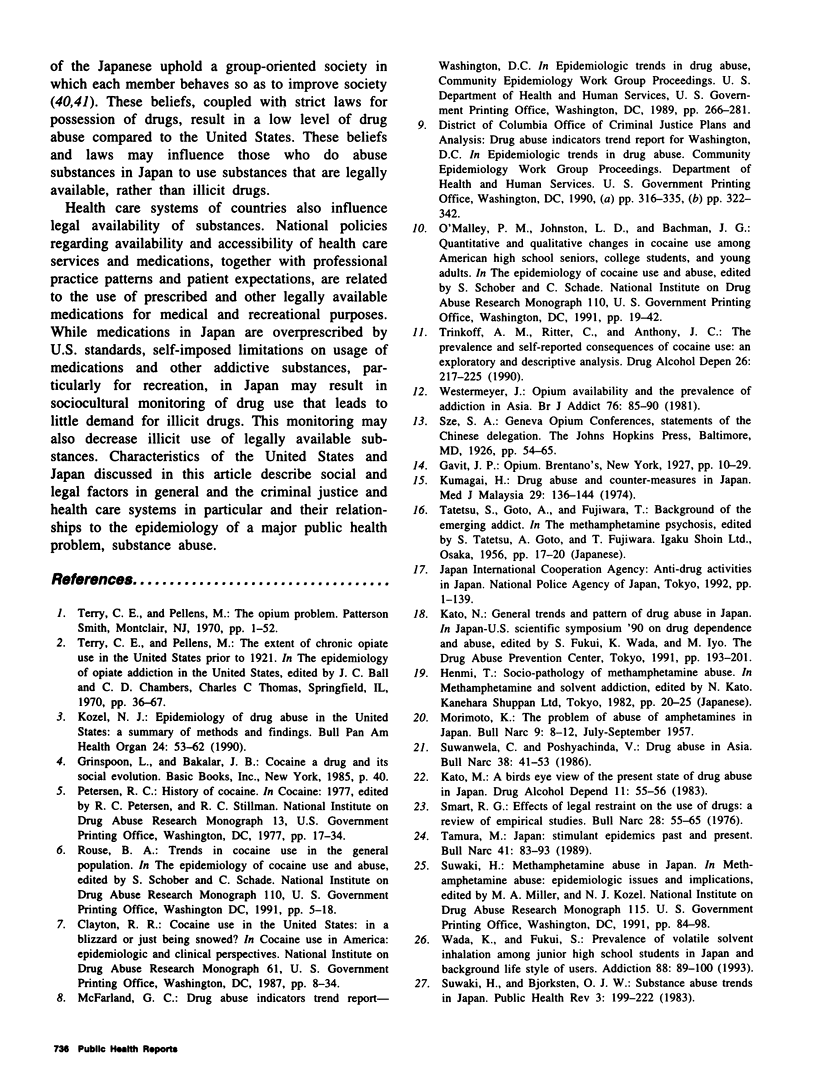
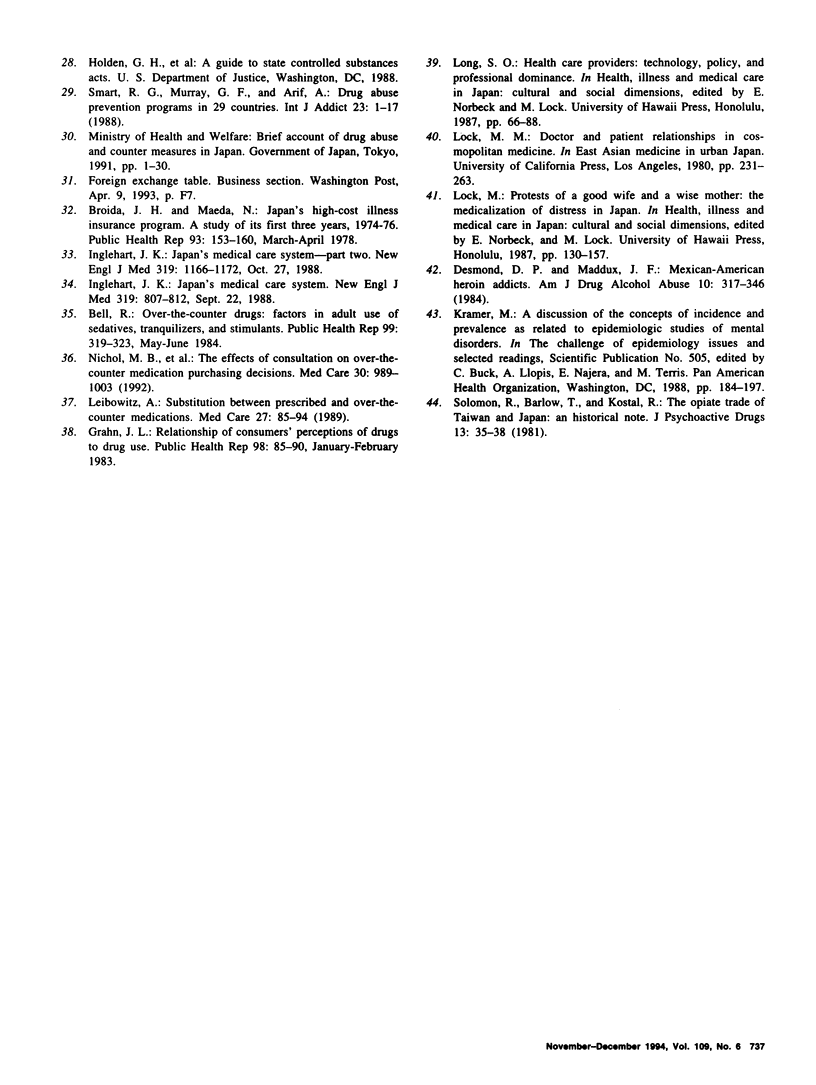
Selected References
These references are in PubMed. This may not be the complete list of references from this article.
- Bell R. Over-the-counter drugs: factors in adult use of sedatives, tranquilizers, and stimulants. Public Health Rep. 1984 May-Jun;99(3):319–323. [PMC free article] [PubMed] [Google Scholar]
- Broida J. H., Maeda N. Japan's high-cost illness insurance program: a study of its first three years, 1974-76. Public Health Rep. 1978 Mar-Apr;93(2):153–160. [PMC free article] [PubMed] [Google Scholar]
- Desmond D. P., Maddux J. F. Mexican-American heroin addicts. Am J Drug Alcohol Abuse. 1984;10(3):317–346. doi: 10.3109/00952998409001475. [DOI] [PubMed] [Google Scholar]
- Grahn J. L. Relationship of consumers' perceptions of drugs to drug use. Public Health Rep. 1983 Jan-Feb;98(1):85–90. [PMC free article] [PubMed] [Google Scholar]
- Kato M. A birds eye view of the present state of drug abuse in Japan. Drug Alcohol Depend. 1983 Feb;11(1):55–56. doi: 10.1016/0376-8716(83)90095-9. [DOI] [PubMed] [Google Scholar]
- Kozel N. J. Epidemiology of drug abuse in the United States: a summary of methods and findings. Bull Pan Am Health Organ. 1990;24(1):53–62. [PubMed] [Google Scholar]
- Kumagai H. Drug abuse and counter-measures in Japan. Med J Malaysia. 1974 Dec;29(2):136–144. [PubMed] [Google Scholar]
- Leibowitz A. Substitution between prescribed and over-the-counter medications. Med Care. 1989 Jan;27(1):85–94. doi: 10.1097/00005650-198901000-00008. [DOI] [PubMed] [Google Scholar]
- Nichol M. B., McCombs J. S., Johnson K. A., Spacapan S., Sclar D. A. The effects of consultation on over-the-counter medication purchasing decisions. Med Care. 1992 Nov;30(11):989–1003. doi: 10.1097/00005650-199211000-00003. [DOI] [PubMed] [Google Scholar]
- Smart R. G. Effects of legal restraint on the use of drugs: a review of empirical studies. Bull Narc. 1976 Jan-Mar;28(1):55–65. [PubMed] [Google Scholar]
- Smart R. G., Murray G. F., Arif A. Drug abuse and prevention programs in 29 countries. Int J Addict. 1988 Jan;23(1):1–17. doi: 10.3109/10826088809027487. [DOI] [PubMed] [Google Scholar]
- Solomon R., Barlow T., Kostal R. The opiate trade of Taiwan and Japan: an historical note. J Psychoactive Drugs. 1981 Jan-Mar;13(1):35–38. doi: 10.1080/02791072.1981.10471448. [DOI] [PubMed] [Google Scholar]
- Suwanwela C., Poshyachinda V. Drug abuse in Asia. Bull Narc. 1986 Jan-Jun;38(1-2):41–53. [PubMed] [Google Scholar]
- Tamura M. Japan: stimulant epidemics past and present. Bull Narc. 1989;41(1-2):83–93. [PubMed] [Google Scholar]
- Trinkoff A. M., Ritter C., Anthony J. C. The prevalence and self-reported consequences of cocaine use: an exploratory and descriptive analysis. Drug Alcohol Depend. 1990 Nov;26(3):217–225. doi: 10.1016/0376-8716(90)90163-9. [DOI] [PubMed] [Google Scholar]
- Wada K., Fukui S. Prevalence of volatile solvent inhalation among junior high school students in Japan and background life style of users. Addiction. 1993 Jan;88(1):89–100. doi: 10.1111/j.1360-0443.1993.tb02766.x. [DOI] [PubMed] [Google Scholar]
- Westermeyer J. Opium availability and the prevalence of addiction in Asia. Br J Addict. 1981 Mar;76(1):85–90. doi: 10.1111/j.1360-0443.1981.tb00210.x. [DOI] [PubMed] [Google Scholar]


